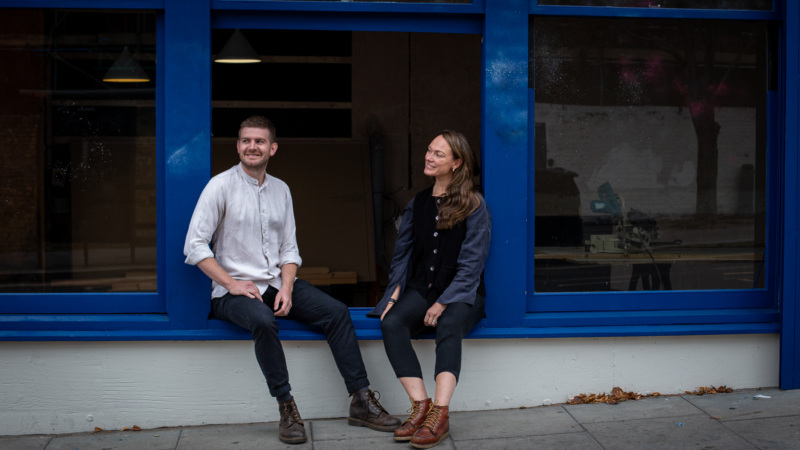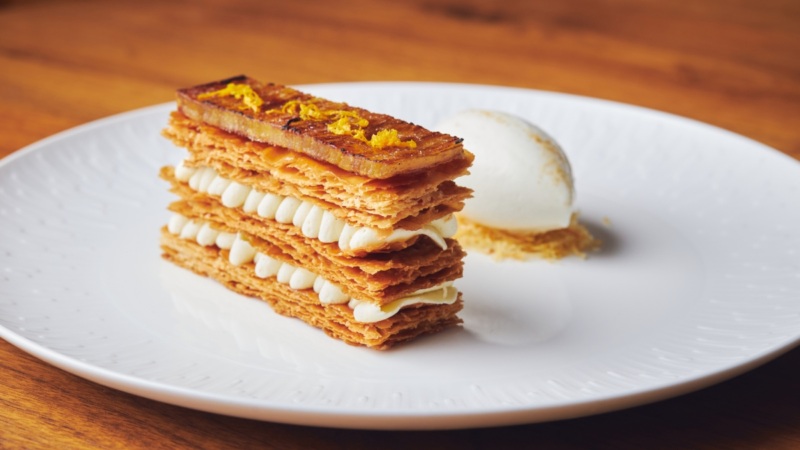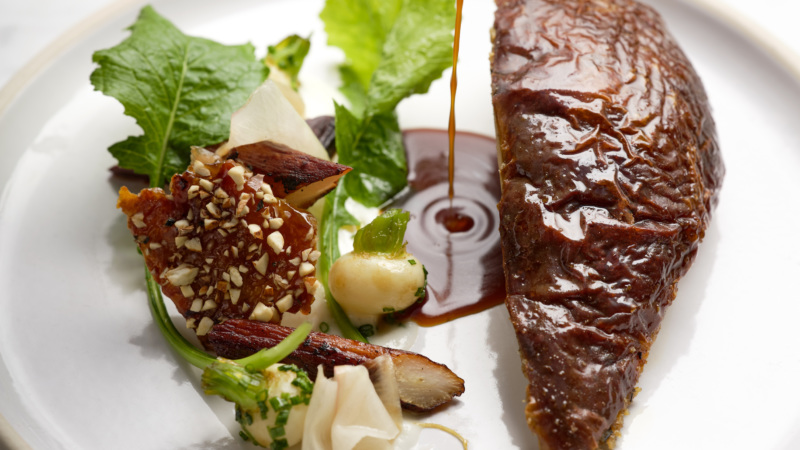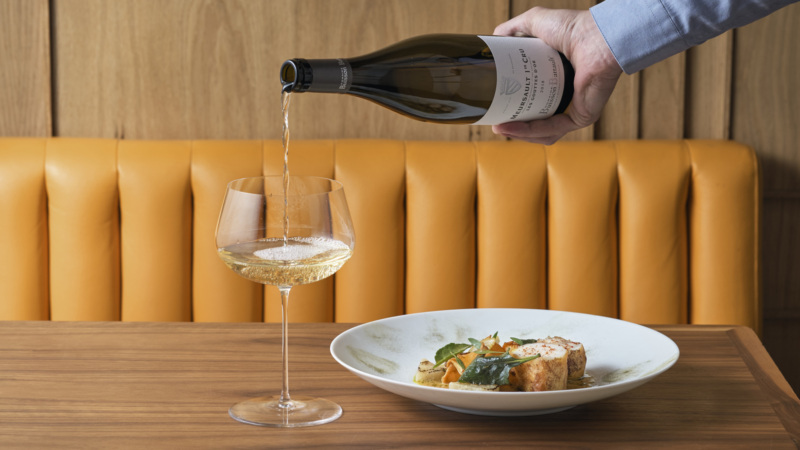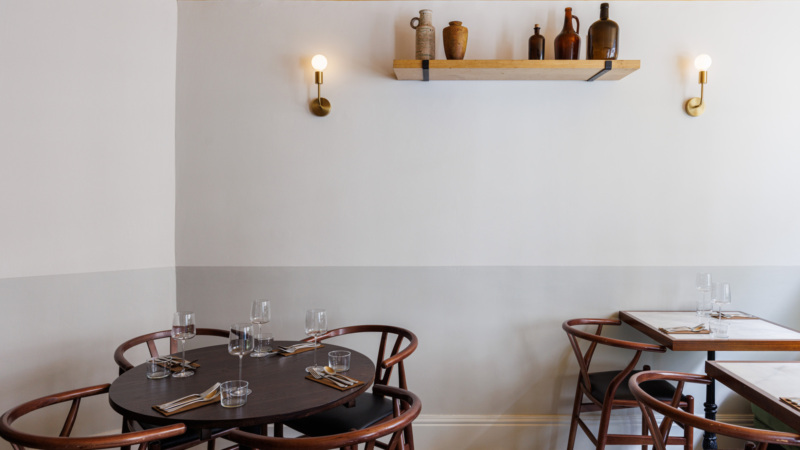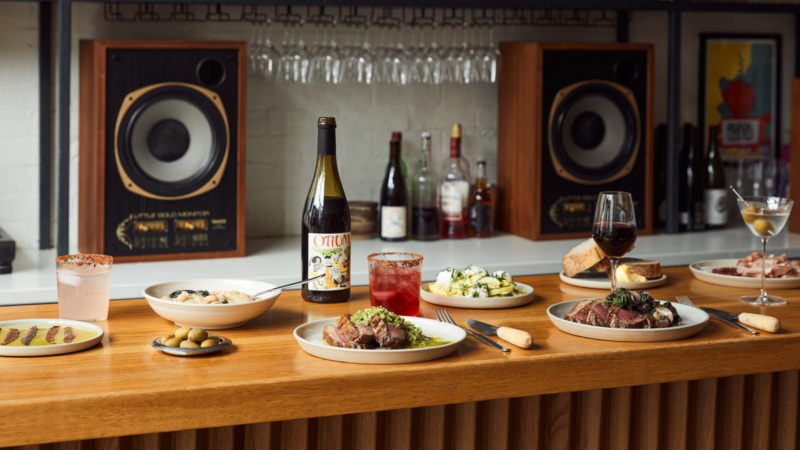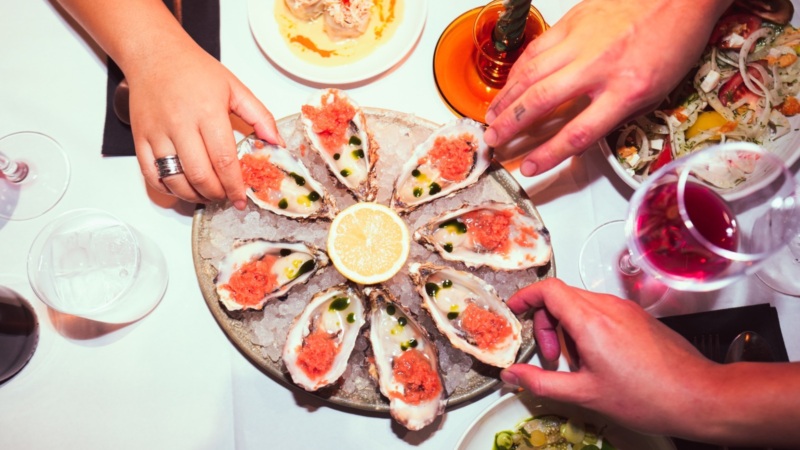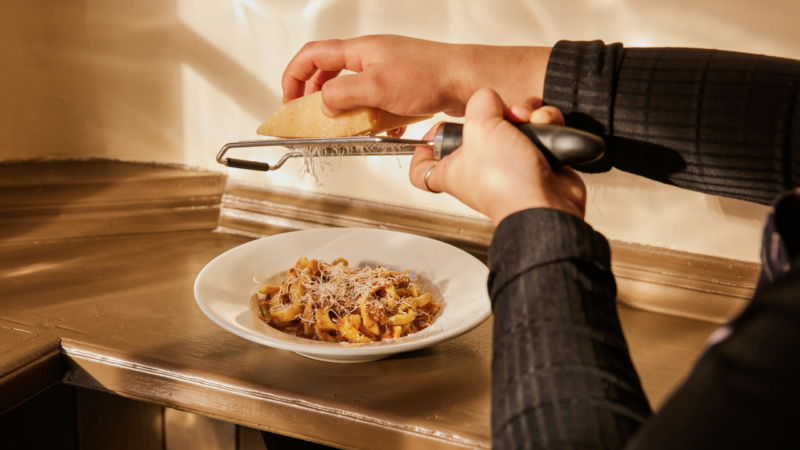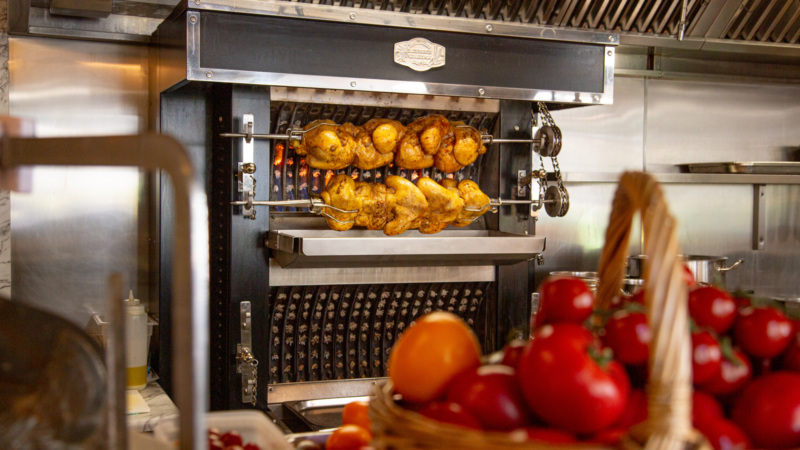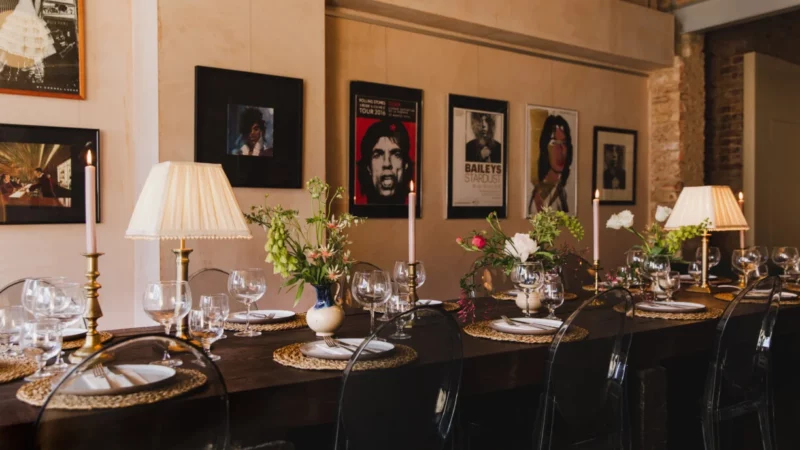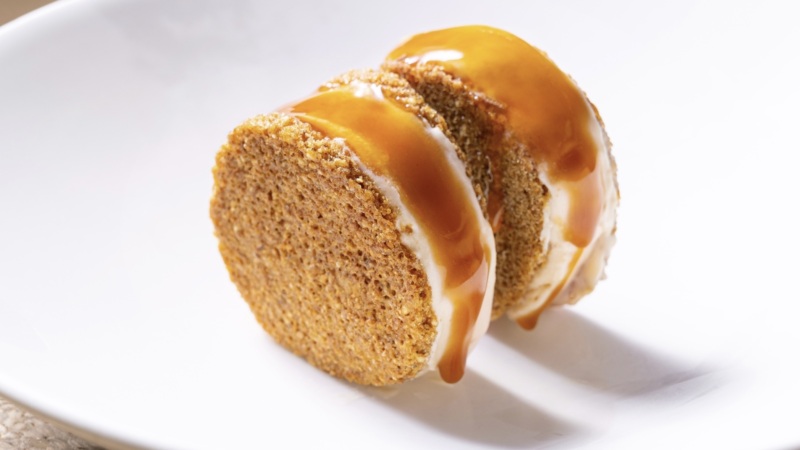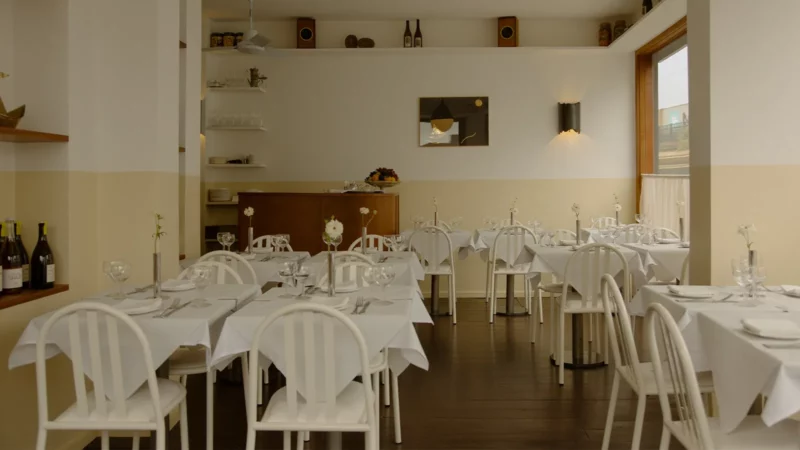
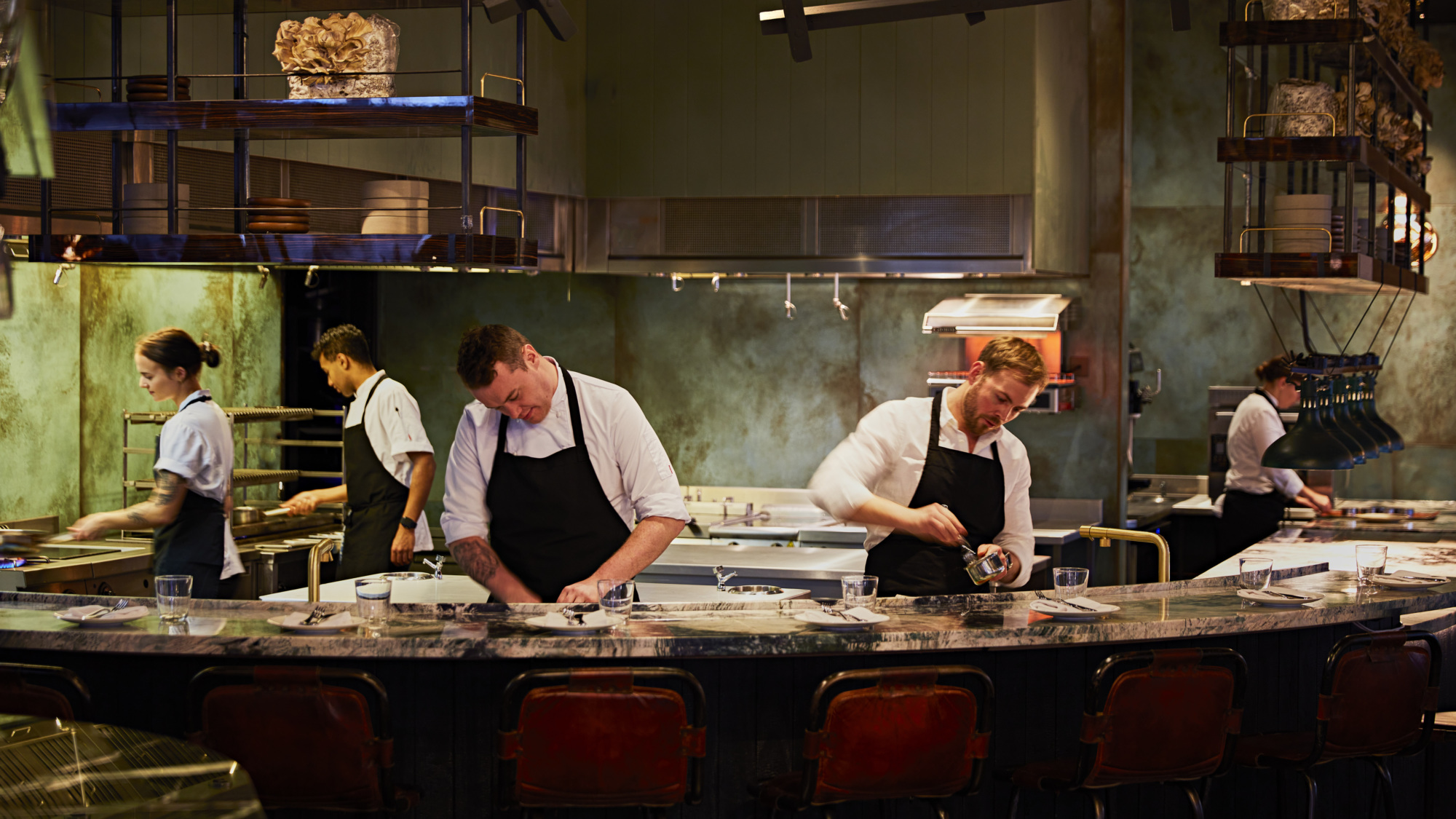
The More That Fallow Pursue Sustainability, The Easier It Gets
Almost two years ago, the Fallow team of chefs Jack Croft and Will Murray and restaurateur James Robson opened their first bricks-and-mortar residency on Heddon Street to great acclaim, but it took only days for the effects of the pandemic to hit. But since then, the restaurant hasn’t just survived – it’s positively thrived, in no part thanks to the trio’s ingenuity and sheer hustle.
Recently, Fallow moved its address to a new, permanent site in St James’s Market – a smart address – with an open kitchen, chef’s counter, wraparound terrace, and bar. With a tagline of “creative cooking, sustainable thinking”, they’ve hit the ground running with a fully-fledged, forward-thinking concept with masses of crossover appeal. Here’s everything you need to know.
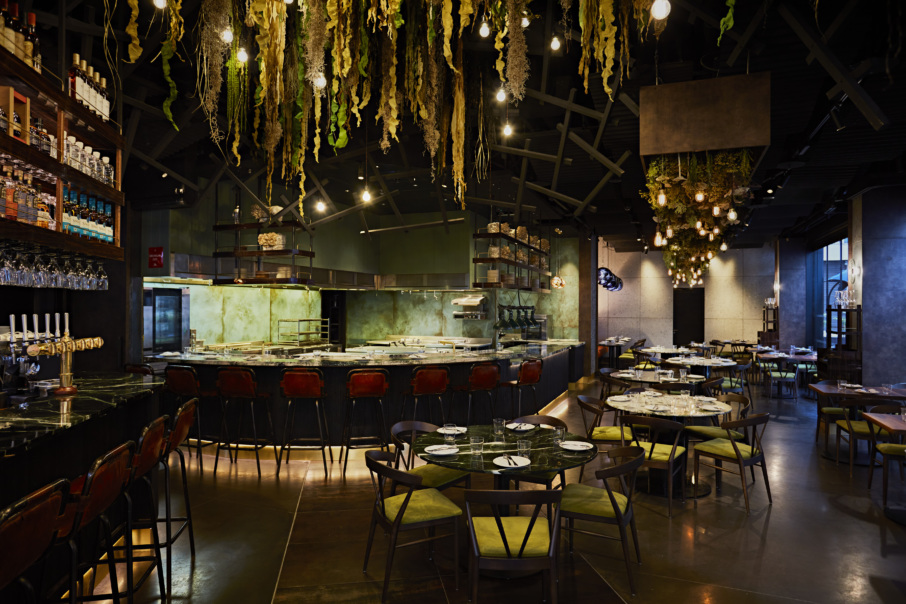
Croft and Murray are best friends who met in the kitchens of two Michelin star Dinner by Heston
The two chefs’ combined resumé boasts experience at a roll call of renowned restaurants, including El Celler de Can Roca (Murray), The Fat Duck, Clove Club, Royal Hospital Road (Croft), but it was at Dinner by Heston, where they met five years ago, that the idea for Fallow was seeded.
They’d seen the waste that often accompanied fine-dining concepts and “wanted to do something different, something exciting,” and saw there was a niche in the market. Fallow began with sold-out residencies at Crispin and Carousel; then in March 2020, less than a fortnight before the first UK lockdown, they opened what was originally to be a 12-week pop-up at 10 Heddon Street.
It must be an auspicious site: Manteca was in there before Fallow, and Budgie Montoya’s Sarap Bistro is going great guns currently. As challenging as the on-off nature of pandemic trading was, it allowed them to hone their style, forge the restaurant’s identity, and earn a Michelin Bib Gourmand in the process.

- Staring Down Hardship, Fallow Have Hustled to Keep Their Dream Alive
- Through the Pandemic, Restaurants Have Supported Others. They Deserve the Same Support in Return
- London’s Greatest Chef’s Counter Is Back — And It’s Better Than Ever
- For Many, The Union Between Restaurants and Charities Has Been a Lifeline. So, Where Do We Go From Here?
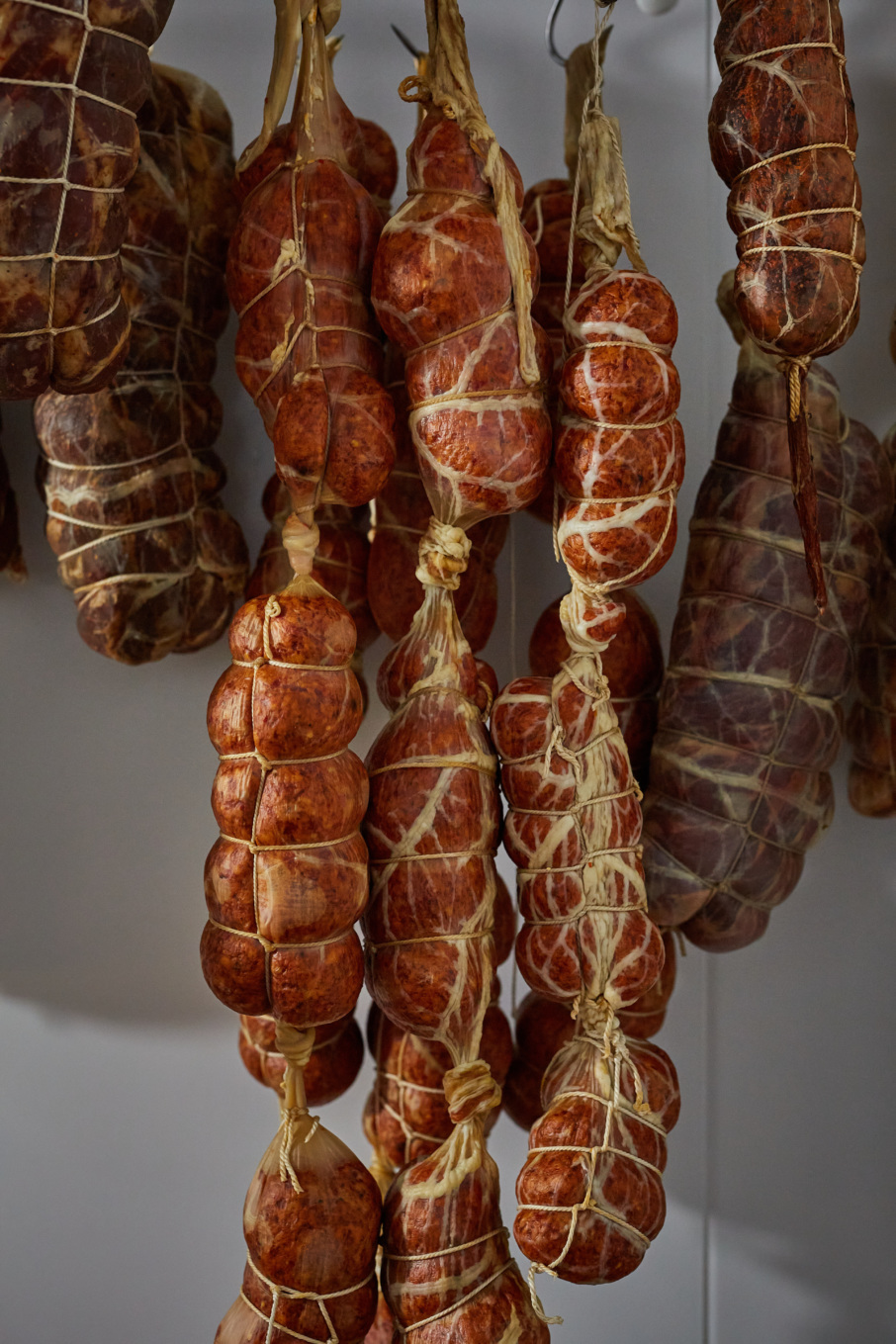
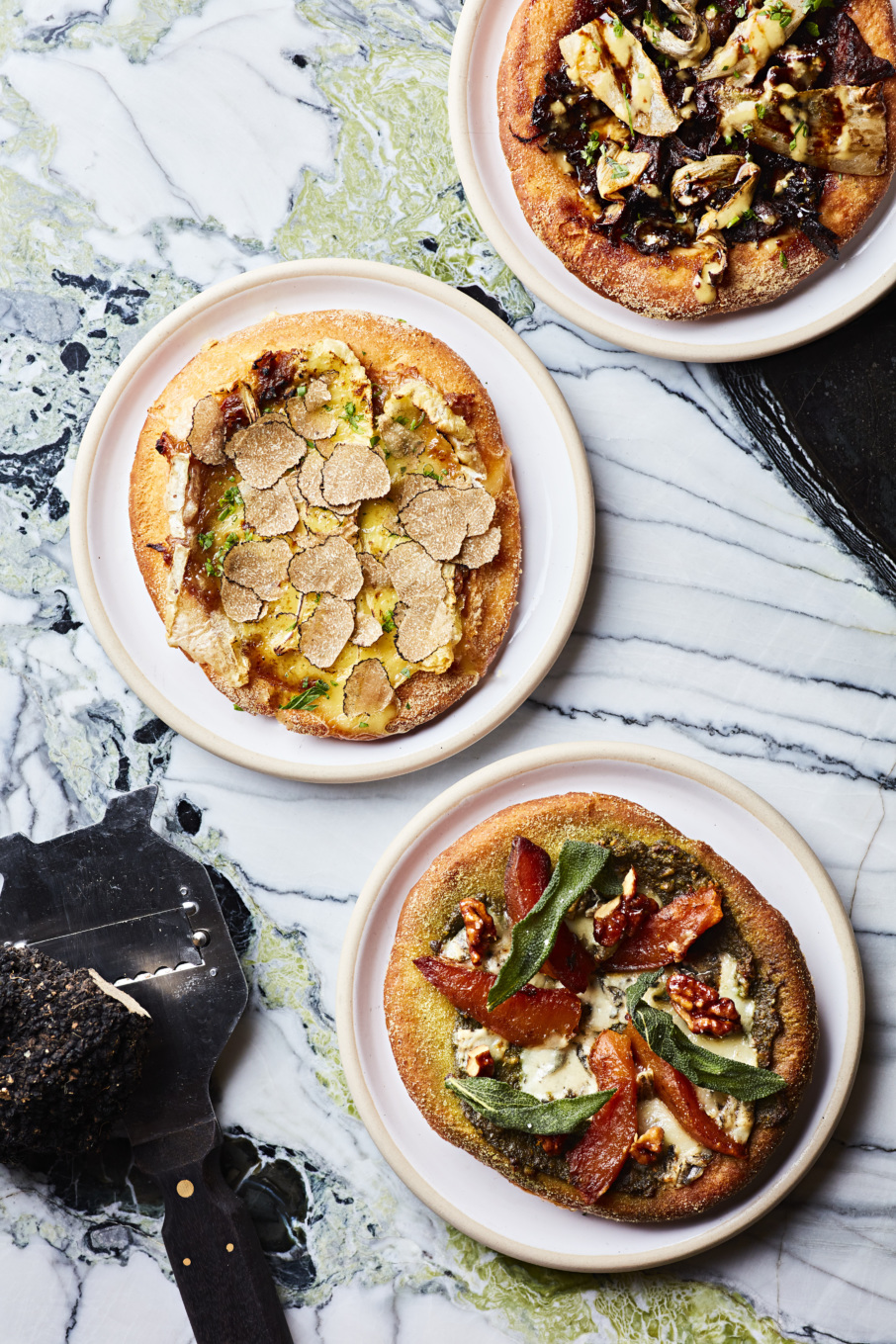
At the new site in St James’s Market, Fallow can realise its sustainability objectives
The leap from the 40-cover pop-up to a new 150-cover site on St James’s Market in November (their new neighbours include fellow heavyweights like Ikoyi, Aquavit and Scully) was a huge one. While challenging in many ways, the team love the location and have an existing local client base. Even better, the extra space affords them the opportunity to tap their full creative potential.
But it’s prime West End real estate – which means high rents. For the economics to work, the restaurant has opened for longer hours, and runs an expanded menu (what Croft describes as “a younger, modern version of something classic like the all-day dining at the Wolseley”). They’re happy, for with size comes enhanced buying power. They can now buy in whole animals to butcher in-house – truly, a dream for many chefs – and use every last scrap across the nose-to-tail menu.
“Chefs will say ‘I want the best quality ingredients and I want to do as little as possible to them’ – it’s the classic line, right? We’re turning that model on its head.” – Jack Croft
Where previously they bought in British charcuterie, Fallow now make their own venison saucisson, ‘nduja, coppa, hams, terrines, and sausages. “To use all the waste, to come up with creative ideas for underused ingredients, you need a lot of prep space, you need a lot of prep time,” explains Croft. “Chefs will say ‘I want the best quality ingredients and I want to do as little as possible to them’ – it’s the classic line, right? We’re turning that model on its head.”
Vegetables are used from root-to-stem. Croft’s currently playing with treviso lettuce roots, confited in butter and honey, which open like a rose when turned upside down. Also new to the menu are brioche dough flatbreads flavoured with a dehydrated spice powder magicked out of leftovers from production of their in-house sriracha; meanwhile, their version of tartiflette comes loaded with off-cuts of their boulangère potato side dish, onions and gooey Tunworth cheese.
The more they pursue sustainability, the easier it gets. “Now I feel like we have an eye for it,” says Croft. It’s a strong USP that has attracted passionate young chefs in their droves. “They’re fresh out of college, they love sustainability, they’ve seen us on Instagram and they want to get involved. If they take that into other restaurants and their own restaurants, in the future, that’s good for everyone.”
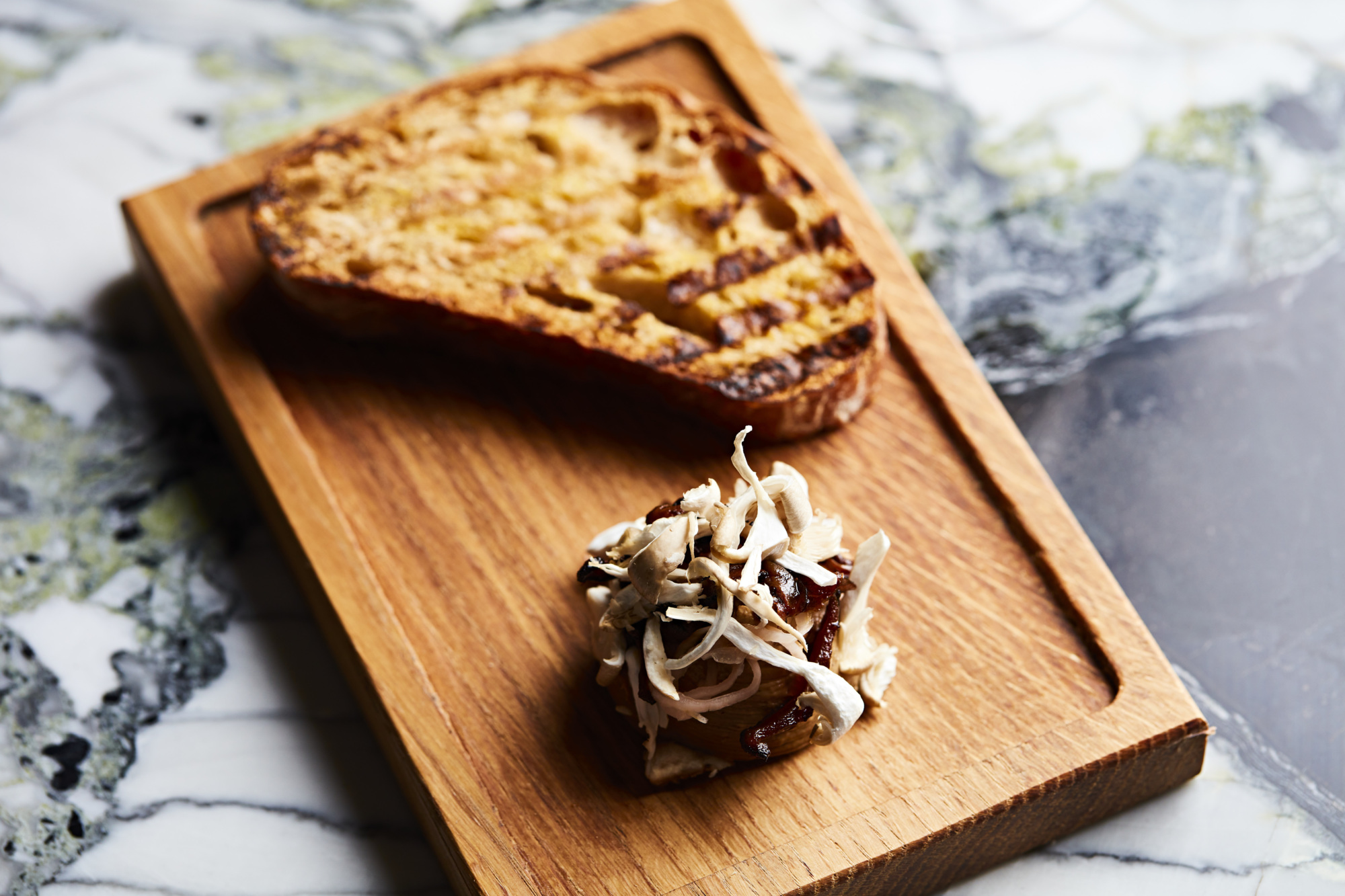
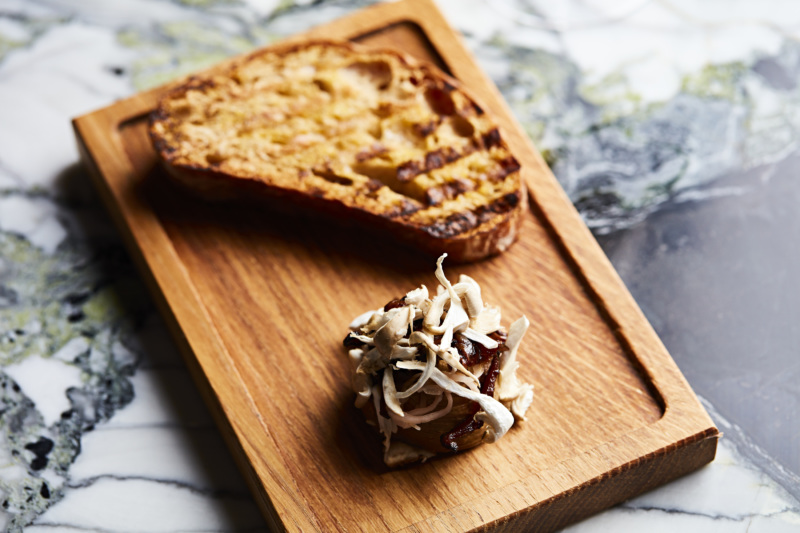
They’ve built a mushroom treehouse in the basement
Fallow has a smallholding in Esher for own-grown fruit and vegetables, while at the restaurant itself, they grow their own mushrooms – in a 6ft x 6ft room built literally on top of a fridge in the basement kitchen. They’re calling it the mushroom treehouse. Eventually, they’ll have a mushroom wall in the dining room too.
Many of Fallow’s homegrown mushrooms end up in the sublime mushroom parfait, the inspiration for which was Meat Fruit, the iconic chicken liver dish offered at Dinner by Heston which Croft and Murray have both made many, many times. “How great is that dish?” says Croft. “It’s consistent. It’s a showstopper. It’s easy to make within reason and in service it’s very easy to churn out.”
“[Young chefs are] fresh out of college, they love sustainability … and they want to get involved. If they take that into other restaurants and their own restaurants, in the future, that’s good for everyone.” – Jack Croft
They needed an extra plant-based dish (the mushroom parfait, incidentally, is vegetarian not vegan because butter) so they made a mushroom parfait following the same classical method. “You caramelise the mushrooms down in butter until they’re super dark and almost crispy. When you think you’re done, you keep cooking them even more. You’re almost dehydrating them to get a really dark natural umami flavour which we further enhance with soy and mirin.” The dish was “bang on” first try and has been on the menu ever since. From one terrine a day, they now make ten.

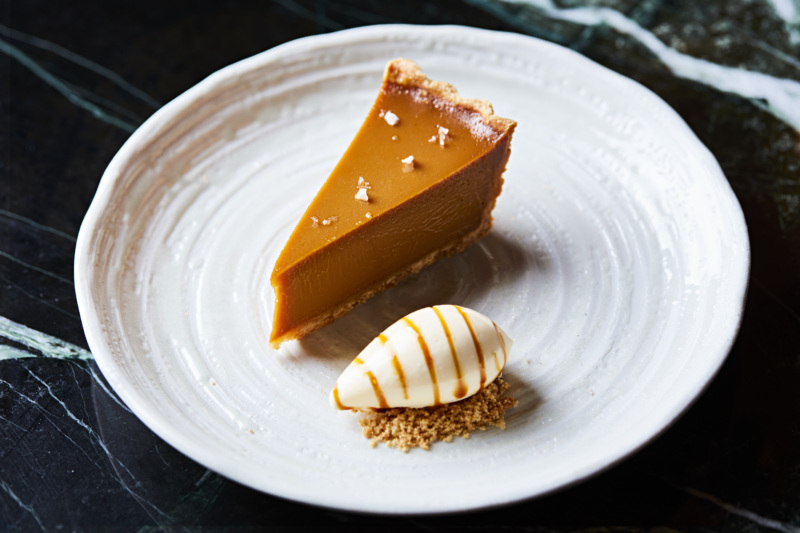
They have a bona fide star in pastry chef Anna Williams
While the ideas were always there, desserts were “a little bit of a weak spot”. Then along came Anna Williams, whom Croft and Murray knew from Dinner where she was head pastry chef. Williams had ideas galore and a knack for translating Croft and Murray’s ideas into sensational finished dishes.
Take the Chelsea tart, for example, which transforms whey, a by-product of cheesemaking (they get theirs from Kappacasein dairy), into gooey, caramelly stuff of joy. Croft and Murray used to reduce, freeze, and grate it over meat and fish dishes for a slightly cheesy, savoury acidity, but couldn’t figure out how to use it to its full potential. “We had the idea to do a tart but could never get the balance right. We wanted it to have that ‘Instagram wobble’ and also taste utterly delicious, because if you’re going to do something as simple as a tart, the execution has to be spot-on.” After a couple of tries (it takes five days to reduce 60 litres of whey), Williams nailed it. See also: Her impeccable sourdough soft serve, Pump Street chocolate ganache, and the beef fat brioche rolls that accompany salmon belly parfait.

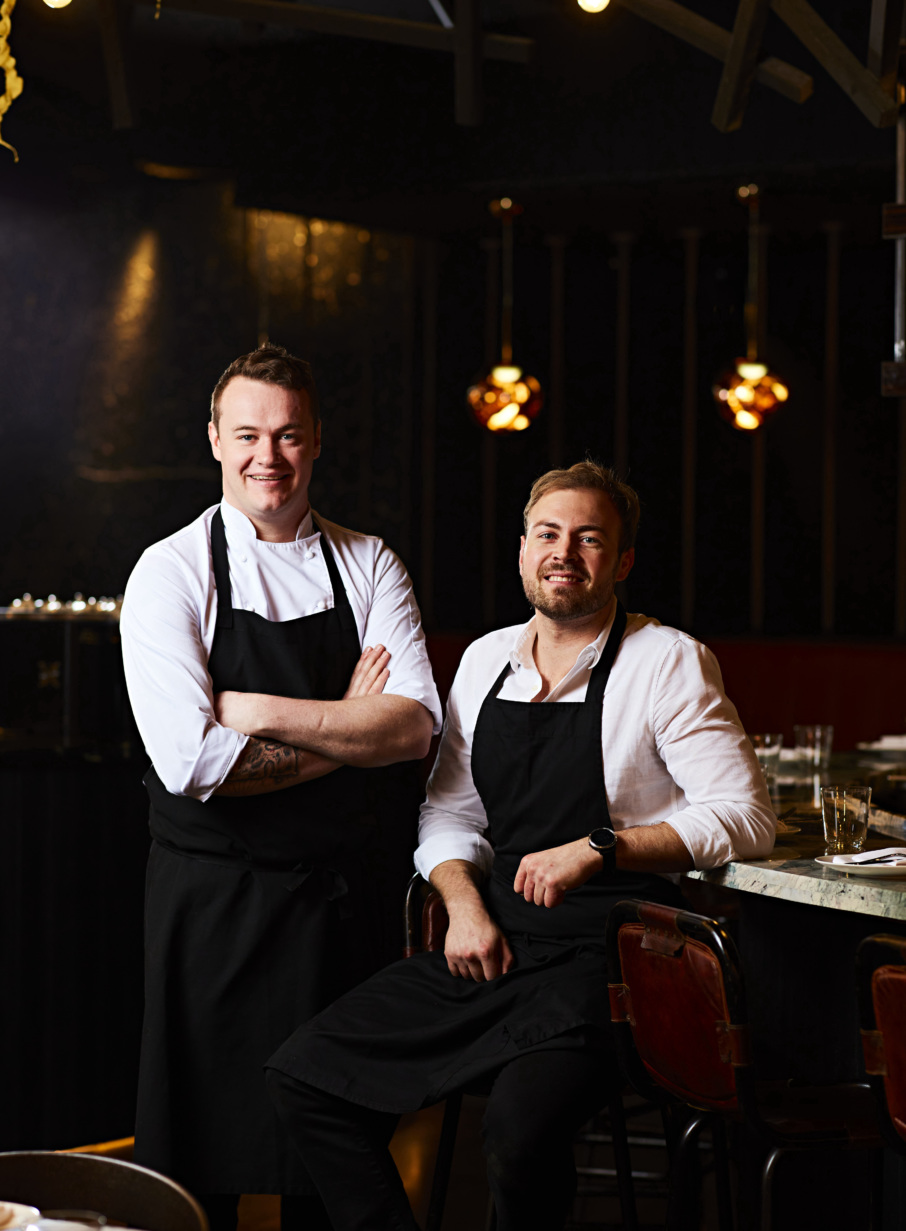
If it weren’t for London restaurant critic Fay Maschler, there might be no signature cod’s head.
“When we first started Fallow, we had to go looking for ideas. We needed a menu and were panicking.” Their search for inspiration took them to Bethnal Green Fish at Billingsgate Market (suppliers to Bibendum and Hélène Darroze among others), where they happened upon a big metal container filled with bones, guts, and heads: the rubbish pile.
They took delivery of a box of cods’ heads at the restaurant the next day, “not clean, not presented, literally just heads hacked off the spine. Not very pretty,” recalls Croft. “We spent a couple of hours figuring out how we could prep them and ended up sawing them in half straight between the eyes, which is an extraordinary amount of effort I can tell you.” The heads then got a half hour bath in brine from the house sriracha before being seasoned, seared, roasted, blowtorched, and drenched in a sriracha butter sauce. “We did a few of them and were like, ‘we can’t keep doing this, it’s not worth the labour.”
But that night, in came restaurant critic Fay Maschler, now of Tatler, then of the Evening Standard. “It was on special, and she ordered it – the first or maybe the second one – and we were like, “oh God, we can’t tell her we haven’t got it. Shall we serve it or not?”. They served it and Maschler loved it. To this day, it’s one of Fallow’s biggest sellers and they’ll sell as many as fifty a day. It’s a point of pride for Croft. “The fishmongers now saw, clean and trim them, so they’re presented as a premium piece of fish. We’ve changed the mindset of that supplier, that to me is the most eye-opening thing.”
Hilary Armstrong is a freelance food and restaurant writer based in London. Follow her on Twitter and Instagram. Follow Resy, too.

